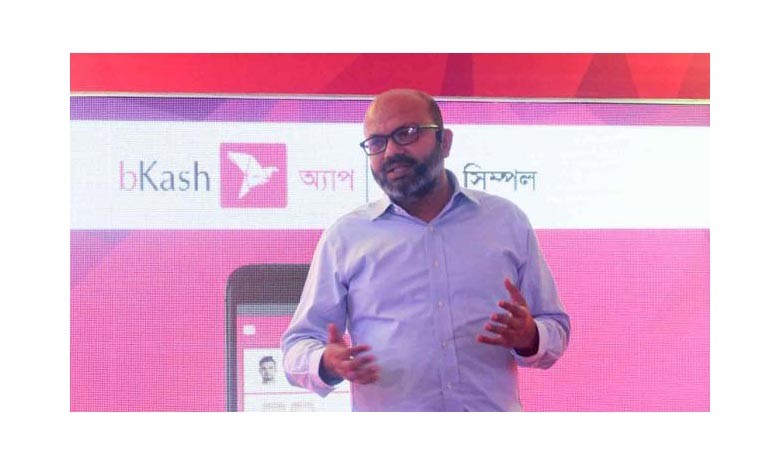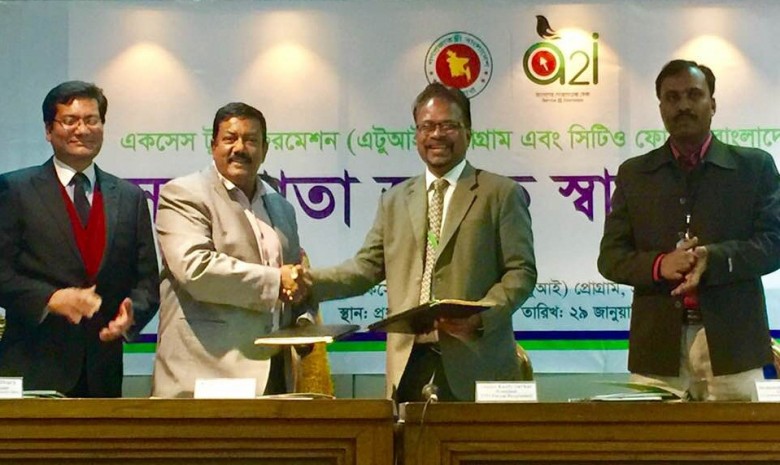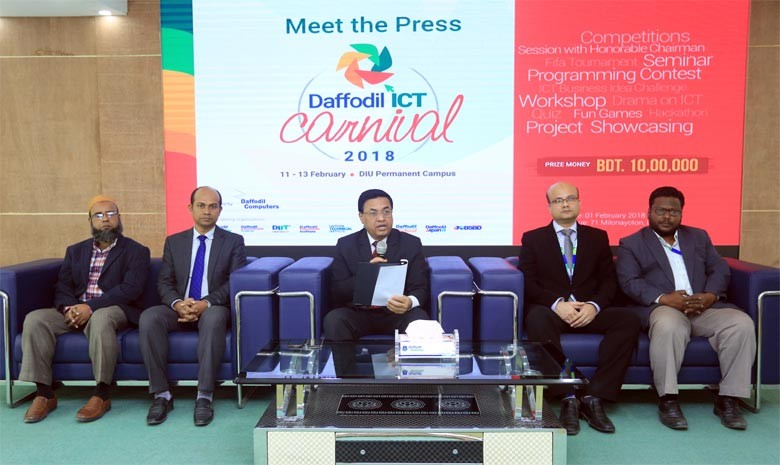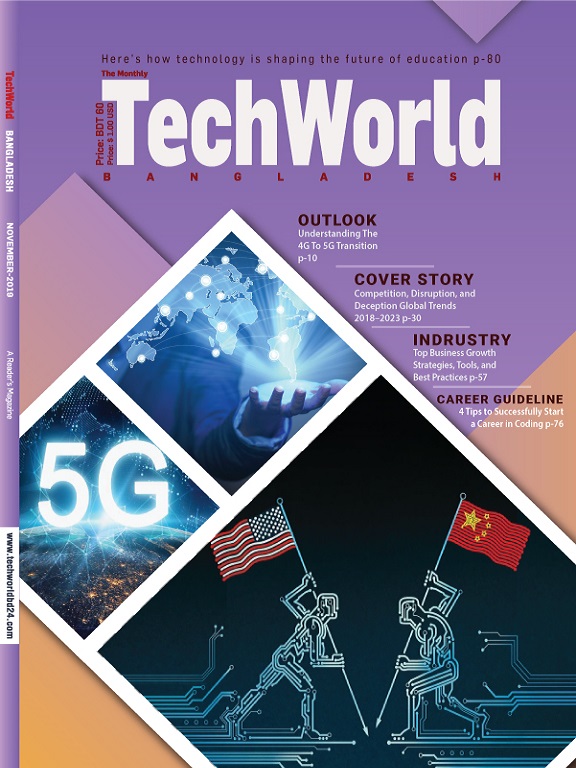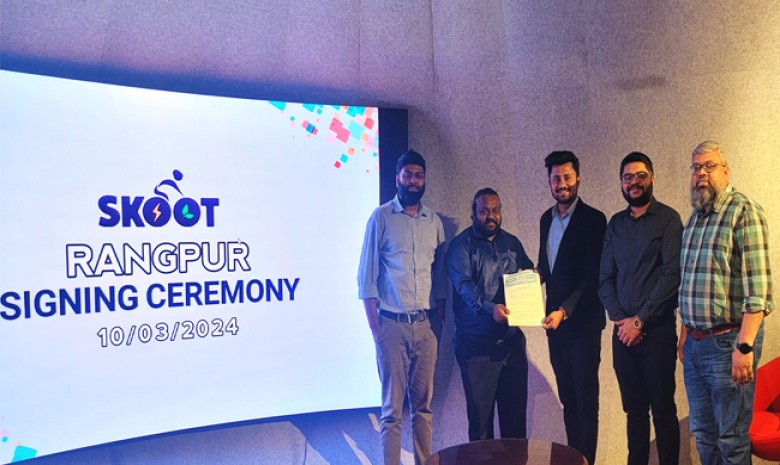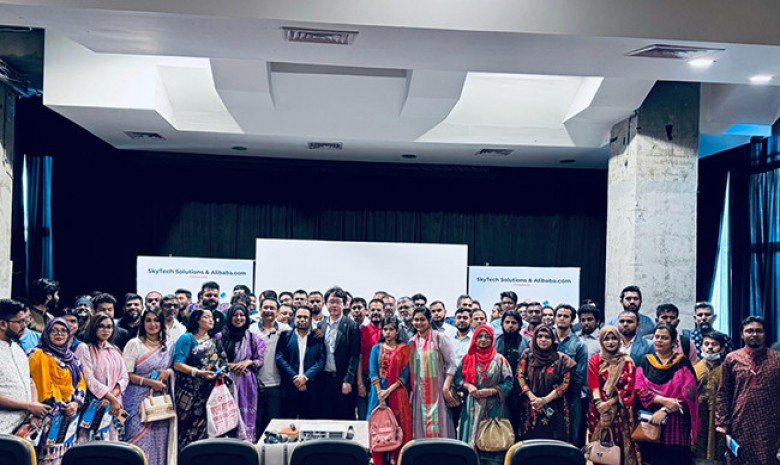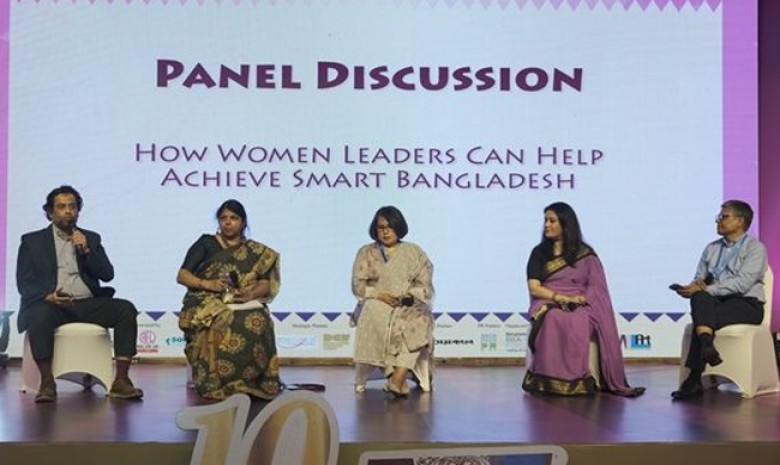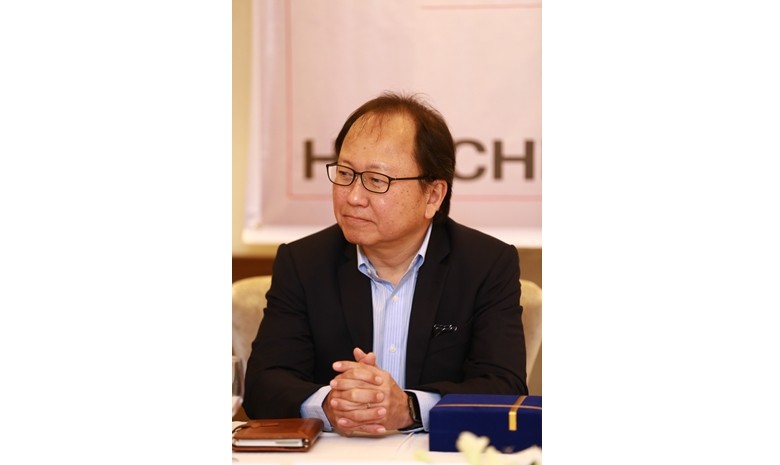Five significant trends will dramatically shape the global outlook and operating environment through 2023.
By Paul A. Laudicina, Erik R. Peterson, and Courtney Rickert McCaffrey
Executive Summary
- Battle for technological supremacy. The United States and China have emerged as the dominant players in the race for hegemony in the Fourth Industrial Revolution. Divergent technology standards will persist while the competition continues. The winner will have outsized influence—with economic, political, and military implications for years to come.

- Rise of the Indo-Pacific. The Indo-Pacific is the new megaregion at the heart of the global economy and geopolitical competition. As China steps up, the United States bows out, and a variety of middle powers move into the mix, the Indo-Pacific will simultaneously become more important to the commercial success of multinational corporations and more difficult to navigate.
- Clean food revolution. The global food industry is experiencing a profound disruption. More consumers prefer eating “clean foods” that are healthier and more environmentally sustainable. And technological innovations in food production are enabling a new meat mix that will change how people around the world consume protein.
- Next-generation fake news. Fake news has already proven costly to governments, businesses, and societies around the world. Get ready for more volatility. Falsified video and audio are becoming less expensive and more convincing—and have a wider global reach. This next generation of fake news could prove far more damaging as fabricated stories become much harder to disprove.
- Transformation of higher education. Technological changes, policy shifts, and companies taking a more active role in addressing skills shortages are reshaping higher education for the 21st century. As education shifts toward more technical training, a more specialized global workforce will emerge, and education systems will become a more important determinant of national competitiveness.
Trend #1
Battle for Technological Supremacy
The Fourth Industrial Revolution (4IR) has kicked off a new battle for global technological supremacy, and two leading players have emerged: the United States and China.1 The United States remains the dominant technological force on the global stage, bolstered by longstanding R&D investments, strong university research programs, and an ingrained culture of innovation. China, however, has risen swiftly to become a top-tier challenger. Beijing is enacting national strategies, laws, and standards with the potential to fulfill Chinese President Xi Jinping’s stated goal of China becoming “a cyber superpower.” While the European Union (EU), Japan, and South Korea continue to invest heavily in R&D, innovation headwinds ranging from rigid business models and aging populations to limited venture capital funding have left them comparatively behind. The winner of the 4IR race will have an edge politically, economically, and militarily for years to come. As the winner has the potential to reshape the global operating environment, the stakes could not be higher.
Divergent government approaches to technology competition
The United States and China have fundamentally different approaches to waging their battle for technology supremacy. While China has prioritized state leadership with private-sector support, the United States is pursuing a more free-market approach, marking a shift from the US government’s historic leadership role in driving new technological innovations. US government investments dating back to the 1950s and 1960s were, for example, central to the commercialization of semiconductors, development of the global positioning system (GPS), and the creation of the Internet. In recent years, however, such bold government-led initiatives have been deprioritized in federal budgets, and longstanding research projects have ended. The new Office of American Innovation has produced limited results to this point, and President Trump did not nominate a science advisor until August, leaving the position vacant for the longest period since its creation in 1976. Instead, the United States is relying on its world-leading research universities, private-sector titans, and strong start-up culture to drive advances. The United States maintains an edge in these areas, but China’s government-led strategies are closing the gaps.
Beijing has unveiled a series of national strategies to achieve its science and technology goals. At the 19th Party Congress in October 2017, President Xi called for integrating the Internet, big data, and artificial intelligence (AI) with the Chinese economy to secure “commanding heights” dominance in science and technology. He argued that China should become a “science and technology superpower … advancing the development of big data, cloud computing, and smart cities so as to turn them into a digital silk road for the 21st century.” Specific efforts include Made in China 2025, which focuses on advanced manufacturing, the Next Generation Artificial Intelligence Development Plan, which calls for China to lead the world in AI by 2030, and China’s 13th Five-Year Plan for Informatization (2016–2020), which prioritizes 5G mobile broadband and quantum computing.
China has also deployed a “thousand talents” strategy, an effort to recruit Chinese citizens who have studied at leading universities abroad. Scientists and entrepreneurs are offered lucrative positions, including $160,000 signing bonuses, guaranteed research funding, and housing and food subsidies. Private and state-backed investors are also funding venture capital groups that target senior researchers and corporate leaders at major US technology companies. While heightened visa restrictions in the United States may be depressing talent recruitment from overseas, an estimated 7,000 foreign-trained Chinese scientists and innovators have already returned home.
Beijing is ramping up scientific investments as well. Between 2000 and 2015, Chinese spending on scientific research increased by an average of 18 percent per year, compared with only 4 percent in the United States. Although the United States remains the biggest research spender in the world, R&D as a percentage of the overall economy has fallen since the 1970s. Based on recent trajectories, China could surpass the United States in R&D spending as soon as this year (see figure 1). And China and the United States now award approximately the same number of doctoral degrees in engineering and the natural sciences at domestic institutions each year. While US scientific research generally remains at a higher standard and is cited far more frequently than Chinese equivalents, this growth marks another area in China’s technology ascendance.

Contrasting strategies of the private-sector titans
The United States is leaning heavily on the strength of its private-sector giants to win the battle for technology supremacy. Facebook, Apple, Amazon, Netflix, and Alphabet-owned Google— collectively known as the FAANGs—are well-known around the world. While not yet household names worldwide, their Chinese technology counterparts have rapidly emerged as formidable competitors. Baidu, Alibaba, and Tencent—collectively known as the BATs—are just as dominant (if not more so) in their home market as the FAANGs are in the United States. And while both sets of companies are moving to capture emerging markets, including those in India, Indonesia, and Brazil, each group is pursuing a fundamentally different growth strategy.
First, BATs and FAANGs spend their money differently. The five largest US technology companies spent $228 billion on stock buybacks and dividends (subscription required) between 2015 and 2017, while their Chinese counterparts spent only $10.7 billion on similar expenditures and instead focused on strategic investments. As a result, more of the global technology “unicorns”—privately held start-ups valued at more than $1 billion—are Chinese. Estimates show that 46 percent of all such unicorns in Asia are backed by Alibaba, Baidu, JD.com, and Tencent. The United States remains home to 12 of the top 20 technology companies in the world, but Chinese firms now make up five of the top seven privately held technology companies (see figure 2).
The companies’ approaches to foreign expansion also differ. Foreign subsidiaries of the FAANGs offer identical services as their US counterparts and are branded accordingly. Google and Facebook are used across much of the globe, and the fact that they are free has allowed them to proliferate rapidly in emerging markets. India, for example, is now home to 270 million Facebook users—the most in the world. In contrast, the BATs are either buying up or purchasing minority stakes in a wide network of local players but retaining their original names and identities.
Alibaba, for instance, owns BigBasket in India, Tokopedia in Indonesia, and Trendyol in Turkey, but local customers are largely unaware of these companies’ ties to China. 
Another fundamental difference between the FAANGs and the BATs is in the nature of their relations with their home governments. The FAANGs were able to achieve stunning growth due in part to years of light or non-existent regulations of e-commerce and social media, but this dynamic may be shifting. The FAANGs and Washington are increasingly clashing, as evidenced by recent congressional hearings about Facebook over privacy concerns, fake news, and consumer protections. In contrast, the BATs are tied closely to Beijing. Tencent and Alibaba are regarded as the “gatekeepers to the entire economy.” Both companies coordinate with policymakers and the security apparatus and are even assigned specific functions as part of government strategies. Each of the BATs has a joint R&D lab with government entities as well as the required in-house committee of Communist Party of China members to ensure alignment with the state. Beijing also supports foreign investments by the BATs as an extension of the Belt and Road Initiative (BRI).
Outlook
Over the next five years, the United States and China will remain locked in a battle for global leadership in science and technology. While China is executing a coordinated and comprehensive strategy to push for dominance, challenges for Beijing remain, including a lack of capacity to produce its own semiconductors and processors and lagging research standards. It is therefore unlikely that China will surpass the United States in the short term. But the innovation edge that the United States has enjoyed over the past century is nevertheless eroding. This loss will continue if the US government does not reinstate its historical winning strategy of coupling grand vision with coordinated investments and action. And as the FAANGs and BATs battle it out, the rest of the world will need to decide which set of competing investments to accept and which standards to adopt. The longer this battle for dominance lasts, the greater the risk that the 4IR digital economy will fragment, complicating the operations of global companies and acting as a drag on economic growth.
Business implications
- Prepare for rapid innovation. Businesses should anticipate new innovations and spin-off technologies as a result of this epic battle between the United States and China for the future of 4IR. Staying abreast of technological breakthroughs and thinking through ways to leverage them will give companies a competitive advantage.
- Improve cybersecurity. Data proliferation will increase exponentially as 4IR technologies and 5G networks are implemented. This growth will create even more attractive targets for hackers and data thieves—potentially including corporate espionage. Companies must protect themselves and their customers against such intrusions.
- Monitor technology battle to inform strategy. Identifying markets in which Chinese or US technology platforms are dominant can provide insights into which technological, regulatory, and privacy standards will be required moving forward. Executives should use this information to minimize the costs and inefficiencies associated with engaging with multiple technology platforms.
Trend #2
Rise of the Indo-Pacific
The Indo-Pacific has become the megaregion at the heart of the global economy and geopolitical competition. While there is no formal geographic definition of the Indo-Pacific, we define it here as the region encompassing the Indian Ocean and the western Pacific Ocean (see figure 3). Three catalysts are bringing this megaregion to the fore. First, China is stepping up its economic and diplomatic engagements throughout Asia and beyond as well as its territorial claims in the South and East China Seas. Second, the United States—the hegemonic power in East Asia since the end of World War II—is bowing out from some of its economic and security engagements in the region. And third, Asian middle powers and European countries with territories in the region are moving to fill this void. The result is considerable churn and uncertainty in geopolitical relationships and economic flows across the Indo-Pacific, with implications for the entire world.
Shifting economic alliances
The Indo-Pacific has grown from just 37 percent of the global economy (measured at purchasing power parity) in 2000 to 52 percent today. In addition, Indo-Pacific countries are expected to account for more than two-thirds of annual global economic growth in the next five years. More than half of the world’s seaborne trade is loaded at Indo-Pacific ports, while almost two-thirds of seaborne trade is unloaded there. And the BRI, China’s ambitious infrastructure project, is a key driver of the Indo-Pacific’s continued economic growth and integration. This project is connecting China to Europe via a road and rail network through Central Asia as well as creating a network of ports throughout Southeast Asia, South Asia, the Middle East, and eastern Africa. The Asian Infrastructure Investment Bank, which provides funding for many of the BRI projects, now boasts $96 billion in capital and 87 members, including most Indo-Pacific middle powers. 
In light of this economic outreach, it is no surprise that China tops the ranking for economic relationships in the Lowy Institute’s Asia Power Index. In contrast, the economic power of the United States in the region is likely to wane. Although the Trump administration recently announced $113 million in investments for the Indo-Pacific, this amount pales in comparison to China’s $1 trillion BRI investments. Furthermore, the United States abandoned the Trans-Pacific Partnership in early 2017. And more broadly, the Trump administration’s America First economic agenda risks souring some of its economic relationships in the region, particularly given the trade-dependency of many Indo-Pacific economies.
Several Asian countries are moving in to provide a new economic counterweight to China in the Indo-Pacific. The most notable of these is Japan, which led the successful conclusion of the reconstituted Comprehensive and Progressive Agreement for Trans-Pacific Partnership and is breathing new life into the Regional Comprehensive Economic Partnership. Japan also recently signed a trade agreement with the EU, linking Europe more closely to the Indo-Pacific. Beyond trade, Prime Minister Shinzo Abe has pledged $50 billion in infrastructure investment throughout the region over the next three years.
India has similarly begun to engage more throughout the Indo-Pacific. Prime Minister Narendra Modi’s Act East policy seeks to deepen relationships with the Association of Southeast Asian Nations (ASEAN), Japan, Australia, and Taiwan, while the corresponding Look West policy will diversify economic connections throughout the Middle East and Central Asia. As part of this latter initiative, India is investing $500 million to develop a deep-water port in the southeastern Iranian city of Chabahar—a direct counterpoint to the Chinese-financed port in Gwadar, Pakistan, just 76 nautical miles to the east. India has also teamed up with Japan to launch the Asia-Africa Growth Corridor, through which the two countries will invest in infrastructure and production facilities to link African economies to Asia.
Australia is also shifting its economic policies, with a more explicit focus on containing China. Canberra announced in June, for example, that it will help fund an undersea cable connecting the Solomon Islands and Papua New Guinea to Australia—a project that China’s Huawei had originally been tapped to build. Canberra has similarly tightened rules on foreign investment in strategic sectors in a bid to limit Chinese influence in its economy. Meanwhile, South Korea is looking to diversify its economic relationships beyond the United States and China. As part of its New Northern Policy, for instance, Seoul aims to more than double its bilateral trade with Russia by 2020.
Intensifying geopolitical competition
The Indo-Pacific is home to six of the top 10 geopolitical conflicts as identified by the International Crisis Group—and two more are on its borders. These include tensions on the Korean Peninsula, the US–Saudi–Iran rivalry, the war in Yemen, and the Rohingya crisis in Myanmar and Bangladesh. The Indo-Pacific is also home to simmering tensions, including the Doklam Plateau standoff between China and India and contentious maritime territorial boundaries in the East China Sea and South China Sea.
Military spending across the Indo-Pacific is therefore on the rise, jumping from 18 percent of the global total in 2000 to 27 percent in 2017. The United States still accounts for a greater share of global military spending at 36 percent of the total, but this proportion is down from more than 40 percent throughout the 2000s. And, of course, much of US military spending is currently deployed in the Indo-Pacific, although this focus may start to change. President Trump’s recent statement that the United States would stop conducting so-called “war games” with South Korea is causing speculation that the United States may reduce its role as the security provider for Indo-Pacific sea lanes.
At the same time, Beijing is stepping up its efforts to control the 90 percent of the South China Sea that it has long claimed as its territory. China’s activities have included building artificial islands and installing military hardware on them and pressuring other countries to cease economic activities in contested waters. In response, Indo-Pacific middle powers including Australia, France, and the United Kingdom are now taking a more assertive tone against China’s territorial claims and deploying their navies in the area.
The Indian Ocean is also crucial to global trade flows. India has long been active in ensuring open trade routes throughout the Indian Ocean, including through leading roles in the creation of the Indian Ocean Rim Association and the Indian Ocean Naval Symposium. But a strategic shift began in 2016 when China announced its first-ever overseas military base in Djibouti, giving Beijing a stronghold on a vital shipping route for European–Asian trade. Since then, other Indo-Pacific middle powers have become more active in the Indian Ocean. Earlier this year, for instance, Paris and New Delhi signed an agreement giving India access to French bases on Réunion. And Japan will send a helicopter carrier to the Indian Ocean in 2018 for the second year in a row.
Various other dialogues and alliances are popping up throughout the Indo-Pacific to shift the geopolitical balance of power in the region (see figure 4). The resumption of the Quadrilateral Security Dialogue (subscription required) on the sidelines of the ASEAN summit in November

2017 is particularly important, as it was previously disbanded because of concerns from Beijing. But many Indo-Pacific countries are careful not to choose sides. ASEAN countries have long sought to avoid any such entanglements, and South Korea similarly seeks to strike a balance between the United States and China. Even India, which is acting to balance China’s power in some ways, is also seeking to foster a better relationship with Beijing. At the 2018 Shangri-La Dialogue, Indian Prime Minister Narendra Modi said, “Asia and the world will have a better future when India and China work together in trust and confidence, sensitive to each other’s interests.”
Outlook
The Indo-Pacific megaregion will simultaneously become more important to the commercial success of multinational corporations and more difficult to navigate. As the locus of the global economy continues to shift to Asia, the importance of the Indo-Pacific will grow. But the emerging Indo-Pacific is characterized by an expanding set of overlapping free trade agreements and strategic alliances. The United States will continue to reduce its presence in the region, at least in the short term. In its place, the Indo-Pacific middle powers will play a more important role in shaping the economic and security environment, at times collaborating with China and at other times seeking to provide a counterweight to its growing influence. Competing infrastructure initiatives will continue to stimulate economic growth throughout Southeast Asia, Central Asia, and sub-Saharan Africa. At the same time, however, the growing militarization of the Indo-Pacific will raise the risk of an armed confrontation.
Business implications
- Establish a presence in the Indo-Pacific. As the Indo-Pacific becomes more central to the global economy, it will be even more important for international companies to establish a presence there. Localizing business decision-making power within the region—which we refer to as becoming a locally integrated enterprise—will help a company to better understand, navigate, and react to geostrategic cross-currents.
- Increase shipping security and insurance. The increasing militarization of the South China Sea and the Indian Ocean raises the risk of a confrontation in the region. Companies should assess the degree to which their supply chain depends on the Indo-Pacific and consider increasing security on their ships and purchasing higher levels of insurance on their shipments along these trade routes.
- Engage in trade negotiations. The various multilateral and bilateral trade negotiations going on throughout the Indo-Pacific provide an opportunity for companies to open new markets for their products. Executives should engage with both home and foreign governments to make the case for liberalization in their sectors.
Trend #3
Clean Food Revolution
After decades of increasing industrialization and commoditization in the food sector, shifting consumer preferences are causing an industry wide shake-up. Consumers are taking a back-to-basics approach to feeding themselves and their families, eschewing mass-produced, highly processed, and unsustainable products for “clean foods” that are healthier and more environmentally sustainable. The implications are wide-ranging, as global food companies race to innovate and experiment with products to satisfy new consumer demands while defending their portfolios and bottom lines. The next five years will continue to bring change across the sector, with a particularly notable shift in meat production. From consumer-driven changes in farming practices to technological innovations, the way the world gets its protein is on the cusp of profound disruption.
Clean food as part of a big consumer shift
Global consumers, increasingly composed of Millennials and Generation Z, are making more values-based purchases across the entire commercial landscape. This trend includes a growing number of individuals incorporating sustainability, health, and wellness factors into their purchasing decisions. According to a 2015 survey, 66 percent of global consumers were willing to pay more for sustainable brands—a significant increase from the 50 percent who said they would do so in 2013. Further, 57 percent would pay more for fresh, natural, or organic ingredients. And almost half would pay more for products from environmentally friendly companies. Similarly, polling conducted by A.T. Kearney has found that, for the first time, American consumers believe their purchasing decisions have a greater impact on society than their vote.
Clean labels—such as organic and free from genetically modified organisms (GMOs) and antibiotics—and foods that are produced locally and more sustainably are rapidly gaining in popularity as a result, changing the food industry from farm to table. The growth of the global organic agricultural market in recent years is a case in point. Consumers view organic produce as healthier, safer to consume, and more environmentally friendly than their conventionally produced counterparts. While still accounting for only about 1 percent of global agricultural land, organic farming has increased significantly over the past decade, suggesting that farmers see the business case for switching to organic practices (see figure 5). Moreover, this trend is not just a developed markets story, as organic agricultural land is well-distributed globally. For 2015 (the most recent year for which data are available), the countries with the largest year-on-year increases in organic land under cultivation were Australia, the United States, India, Spain, Kenya, Russia, the Philippines, and Madagascar.
It is not hard to understand why consumers are seeking healthier food options. The global rise of noncommunicable diseases (NCDs) is startling. These include cardiovascular disease, certain types of cancers, and diabetes—many of which can be mitigated or prevented through improved diet and exercise. Between 2000 and 2015, NCD deaths grew between 35 and 50 percent in countries as diverse as Cambodia, Egypt, India, Indonesia, Japan, Kenya, Singapore, and Vietnam. And in the 10 years leading up to 2016, the World Health Organization reports that a troublesome 58 percent increase in adult obesity in the Americas was vastly overshadowed by a 108 percent and 213 percent rise in obesity in Africa and Southeast Asia, respectively.
Given these public health challenges, governments are trying to shift consumer behavior toward higher-nutrition foods through both regulation and taxation. One tactic is improving access to nutrition information. In the United States, federally mandated calorie posting regulations went into effect in May. In Canada, health authorities are proposing warning labels to alert shoppers to high levels of saturated fat, sugar, or sodium, with regulations anticipated to be in effect in 2022. And some governments across both developed and emerging markets have taken a dim view on GMO foods, leading to import bans and labeling requirements.
Sugar or soda taxes are also becoming popular. Although not without controversy, governments argue that the tax reduces consumption of sugary beverages while encouraging manufacturers to make products with less sugar. Mexico, Chile, Barbados, the United Kingdom, Ireland, Portugal, France, South Africa, Saudi Arabia, Sri Lanka, Thailand, and the United Arab Emirates already have national sugar or soda taxes. Other countries are considering similar measures while governments in still others, including the United States, already impose such taxes at the subnational level.
The changing meat mix
Meat represents one of the most dramatic areas of change in the food industry. Global meat production and consumption have surged in recent decades thanks to the improved efficiency of industrial farming practices and a growing global middle class that is better able to afford meat, which typically costs more than grains. But many consumers are concerned about the industry’s negative externalities. Livestock contribute about 15 percent of total carbon dioxide emissions per year. Producing one kilogram of beef can require between 5,000 and 20,000 liters of water. And in 2016, one-third of global grain production—enough to feed 4 billion people—went to livestock. Livestock also receive a significant amount of antibiotics, leading to growing antimicrobial resistance among livestock and the humans who consume the meat. Moreover, more public health officials are warning about the detrimental health effects of meat over consumption.
Growing awareness of these issues is shifting consumer mindsets about meat consumption. According to Google Trends, global interest in veganism has soared more than 2,000 percent since 2004. Meatless Mondays and other campaigns to reduce consumption are also rising. And criticism of industrial farming practices is leading to more demand for cage-free, humanely raised, and grass-fed animal products.
Incumbent meat industry players and food tech start-ups are reacting to this consumer movement. More restaurant chains, for instance, are showcasing clean-label products on their menus. McDonald’s, Chipotle, and Panera are just a few that have embraced antibiotic-free meat. In the United Kingdom, the pork processor Karro trademarked a logo for antibiotic-free meat. And WeWork, the shared office space company, announced in July that it was becoming a meat-free organization to support environmental consciousness.
Some of the most innovative—and potentially game-changing—investments are those related to cultured meat and non-meat alternatives to satisfy global protein demand (see figure 6). For example, Tyson Foods has partnered with the Israeli company Future Meat Technologies and Memphis Meats to produce cultured meat as well as with plant-based burger manufacturer Beyond Meat. These products are already reaching consumers. White Castle recently tested plant-based burgers, provided by the start-up Impossible Burger, in three major cities, and company executives report that sales exceeded initial expectations. Omnipork is looking to expand plant-based pork substitutes in Hong Kong and beyond. And still others are looking to redirect consumers toward new sources of protein altogether, including insects. Traditionally consumed in Asia and Africa, insects are a good source of protein. Western consumers seem squeamish, however, so companies are experimenting with insect proteins and flours, insect-laden chips, and other products to help reduce the “ick factor.”

Outlook
The food industry will have to operate in a changed environment, with both consumers and governments demanding that attention remain focused on clean, sustainable, and healthy products. Food companies will therefore face expectations to minimize the known health risks of mass market products, if not to actively promote good nutrition. While industrial farming, traditional agriculture, and research into GMO crops will continue—especially given the challenge of feeding a growing global population—the clean food movement will also continue gathering steam. Many of the big food companies are already adjusting to this new reality. For example, the Sustainable Food Policy Alliance was launched in July by Danone North America, Mars, Nestlé USA, and Unilever United States. These companies commit to “sodium reduction, responsible marketing and transparency, and reducing their impact on the planet, including cutting greenhouse gas emissions.” Over the medium term, then, the clean food movement should help improve both environmental sustainability and public health.
Business implications
- Embrace the change. The growing pace of mergers and acquisitions among clean food start-ups and investments into new food technologies by the world’s largest industry players foreshadow the future of the global food sector. Executives should find ways to incorporate the growing values-based consumer ethos into their business practices, as Millennials and Generation Z occupy an increasingly large segment of the market.
- Seek opportunities for differentiation. With so many companies rushing into the clean food space, businesses will need to differentiate their messages and approaches to clean labels and improved sustainability to gain and maintain consumer loyalty. In the coming years, simply following the herd will not be enough.
- Monitor the shifting food policy environment. With rapid consumer and industry change comes inevitable policy questions and issues. Regulations to better define and label various clean foods and alternative meat products will surface with increasing frequency and will vary across markets. Shifting regulations could create challenges, but businesses will also have an opportunity to work with policymakers and communities to shape rules for new food products.
Trend #4
Next-Generation Fake News
The next generation of fake news has already arrived. Unlike the previous iteration that was driven by false stories circulated on social media, next-generation fake news incorporates altered audio and video. Google’s duplex assistant and the digital de-aging of Princess Leia in Star Wars: Rogue One provide examples of such technology being deployed for legitimate purposes. But fake audio and video are also being used by malicious actors who are intent on disruption or financial gain. DeepFake videos using AI-aided software can now create realistic videos of anyone doing or saying anything. Fake news is already weakening public trust and damaging societal cohesion because, as the Ministry of Home Affairs of Singapore has warned, “disinformation can destroy lives, disrupt the economy, and damage our collective identity as a nation.” And over the next five years, the technologies underpinning next-generation fake news will get cheaper, faster, and more convincing. The fight against fake news is just beginning.
The rise and evolution of fake news
While the term “fake news” entered the popular vernacular during the 2016 US presidential election, the use of false and sensational news stories to discredit individuals and groups goes back much further. Fake news has existed for centuries, from medieval myths of Jewish blood libel fueling violent anti-Semitism to US newspapers that falsely blamed Spain for attacking the USS Maine sparking the Spanish–American War in 1898. Today, the Internet and social media are spreading fake news like never before—with real-world implications. In May 2017, the French presidential election was hit by fake news when social media reports claimed Emmanuel Macron had secret offshore bank accounts. And now fake social media stories in Sri Lanka are pitting Buddhists against Muslims, resulting in arson and deadly attacks.
Fake news attacks also have serious economic implications. Fake news cost South Korea 30.9 trillion won ($27.7 billion) in 2017 by promoting illegal goods in search engine results. Fitbit, Avon, and the Rocky Mountain Chocolate Factory have been victims in recent years of fake buyout offers that manipulated stock prices. BoycottPepsi trended on social media in 2016 amid false stories that PepsiCo CEO Indra Nooyi had called for Trump supporters to take their business elsewhere. And fake news has also attacked Coca-Cola, including one story that claimed parasites were found in Dasani water bottles.
Next-generation fake news poses an even more dramatic threat to economies and societies because these easily created deceptive audio and video clips are harder to disprove than today’s fake news stories. Creating altered videos now involves relatively few steps (see figure 7). Users simply collect many pictures of a target individual whose face will be swapped onto new or existing video content using deep neural networks to map key facial features. While the technology is complex, non-programmers can create convincing DeepFakes in a matter of hours using free, easy-to-use apps. Similarly, fake audio can clone the speech patterns and inflections of a target speaker when given a sample of the individual speaking for just a few seconds. Users simply type in what they want the voice to say, and the audio is instantly produced. These powerful tools are now available to anyone who wants to use them for whatever purpose—malicious or benign.
Navigating a post-truth world
Confusion, fear, and distrust are growing around the world as it becomes more difficult to differentiate reality from fakery. According to the 2018 Edelman Trust Barometer, nearly seven in 10 people said they already worry about “fake news being used as a weapon.” And more than half of all individuals distrust media in 15 of 18 G20 member countries, with some of the lowest levels of trust in Turkey and Australia (see figure 8). Another recent study found that 64 percent of US adults believe that fake news causes a “great deal of confusion” in society. Such findings are backed by an earlier study in which participants accepted as truth a photoshopped image of US President Barack Obama shaking hands with Iranian President Mahmoud Ahmadinejad—a meeting that never took place. Of those surveyed, 21 percent said they remembered seeing the photo before, and an additional 25 percent claimed to remember the event, but not the specific photo.
Social media makes it easier than ever to spread such disinformation. As discussed in our recent America@250 report, falsehoods promoted online are shared much farther, faster, deeper, and more broadly than the truth. This rapid and pervasive dissemination compounds the problem as studies show that belief in a fake news story increases with repeated exposure. These corrosive effects will be magnified as more altered videos and audio files are incorporated into fake news campaigns. Doctored media clips will serve as evidence of the truth advanced by one perspective or another. At the same time, real video or audio evidence could be credibly dismissed as a fabrication. The result is likely to be deepening partisan divides, greater distrust in institutions, and even violence.
For all these reasons, many governments are taking action against fake news. The German Parliament approved the Network Enforcement Act in July 2017, allowing for fines of up to €50 million on social media companies that “fail to remove criminal content like defamatory and hate-inciting posts quickly enough.” The government of Malaysia approved an Anti-Fake News bill in April, allowing for maximum fines of 500,000 ringgit ($126,600) and prison sentences of up to six years. And France has proposed a bill to fight fake news and is working with Facebook to shutter fake accounts. Anti-fake news legislation is also moving forward in countries as diverse as Kenya, Vietnam, Russia, Italy, Venezuela, and the Philippines. Although the United States is not (yet) legislating against fake news, the US Defense Advanced Research Projects Agency recently held an AI fakery contest to create and detect the “most convincing AI-generated fake video, imagery, and audio.”
Companies are also joining the fight against next-generation fake news—to protect both the public and themselves. Facebook now employs roughly 10,000 content reviewers to monitor community standards and is developing AI algorithms in collaboration with fact-checking companies to speed up detection and removal of fake stories. In August, Apple, Facebook, YouTube, and Spotify banned the controversial Infowars website, known for spreading unproven conspiracy theories. New companies are also emerging to contend with the challenge. San Diego-based start-up Truepic is developing URL watermarks to authenticate pictures and videos on Reddit, while Warsaw’s Userfeeds is leveraging blockchain to ensure that users discover authenticated news and media online. Storyful, a social intelligence and news agency, delivers real-time analysis to source and verify new social media content across the web. More companies outside the technology sector are also deploying market crisis simulation software to address social media firestorms and leveraging their own employees to monitor social media (subscription required). And non-governmental organizations are getting involved as well. For instance, the William and Flora Hewlett Foundation has pledged $10 million to study and combat disinformation and fake news.
Outlook
“To abandon facts is to abandon freedom,” explains Yale historian Tim Snyder. There is thus an urgent need to educate the public on the risks of next-generation fake news. In the United States, several states have introduced or passed bipartisan bills that require public primary and secondary schools to teach the “media literacy skills” necessary for a functioning democracy. Researchers at SUNY Albany, Dartmouth, Los Alamos, and elsewhere are exploring various approaches to identify DeepFakes, but deploying effective tools will likely take years. As the flow of data continues to increase, so too will the volume and speed of fake news dissemination. The risk that individuals could become more enmeshed in their own ideological silos—with their own set of “facts” supported by audio and video—is likely to rise. If efforts by governments, the private sector, and others prove to be too little, too late, next-generation fake news could create a systemic societal crisis in countries around the world.
Business implications
- Build consumer trust. As fake news spreads distrust and confusion, businesses should prioritize demonstrating their reliability, honesty, and transparency with consumers. This effort should include an emphasis on clear communications and effective customer relationship management, as well as necessary investments to protect customer data and personal information.
- Prepare contingency plans. As fake news attacks become more common, developing a swift response plan is becoming more important for businesses. Companies cannot simply wish away this phenomenon, and therefore, they need to work aggressively to detect and deflect attacks when they do happen. Strategic foresight tools will prove most effective in addressing the unpredictable nature of such attacks. Contingency planning exercises such as war-gaming and scenario planning, for instance, can assist in early identification of and effective response to a fake news attack.
- Partner to fight fake news. Companies and governments can benefit by collaborating and sharing knowledge related to the fake news threat. By looking for opportunities to work together and share best practices, both sectors can prepare for the threats posed by next-generation fake news. Developing relationships with leading social media companies will also be important to identify and remove fake news stories quickly.
Trend #5
Transformation of Higher Education
The foundations of the 20th century industrial education system are caving under the pressure of the rapidly advancing Fourth Industrial Revolution. A new education model emphasizing practical skills to support the high-tech knowledge economy is emerging. But even as educational institutions race to adapt to changing labor market demands, companies are facing persistent shortages of workers with the right skills. Businesses are therefore taking their own innovative measures to fill the gap. Governments are also reacting—albeit slowly— to the technological changes affecting a growing number of occupations. The mounting emphasis on technical education will usher in a more specialized labor force at the global level. Nevertheless, greater urgency in modernizing education and training the workforce will be needed to avoid social and political unrest stemming from these economic shifts.
Greater focus on the practical skills that local employers need
As the International Monetary Fund recently warned, technological advances are transforming global labor markets. Higher levels of automation are gradually eliminating some occupations and changing others. European think tank Bruegel estimates, for instance, that one industrial machine replaces three workers on average. These developments are simultaneously spurring demand for highly specialized skills and exacerbating a long-standing shortage of workers in science, technology, engineering, and math (STEM), especially in areas in which demand for skills will continue to rise, including computer science and Internet technology. The shortage of cybersecurity workers is already particularly acute in Brazil, Germany, and Israel, where more than 65 percent of job postings receive no applicants. In fact, many employers across the G20 economies encounter difficulties filling positions (see figure 9).
This significant skills gap is challenging the liberal arts emphasis of traditional Western education. In fact, more than two-thirds of US employers view traditional degrees as failing to adequately prepare students for the modern workplace. A growing number of educational institutions have responded by introducing practice- and problem-solving oriented activities in the classroom that incorporate technology and innovation. For example, the Australian school curriculum emphasizes information and communication technology competencies. And Kenya is in the process of incorporating technical training in secondary education in line with the Science Technology and Innovation Strategy for Africa (STISA) 2024, which seeks to accelerate African innovation.
The skills deficit is also inspiring many companies to invest directly in training and education, tying education systems more closely to local employers. Some companies are partnering with educational institutions to match curricula with local demand for skills. For instance, Lorain County Community College in the American state of Ohio is collaborating with local businesses, such as microelectronics company SMART Microsystems, to train students on complex sensor technology. In the United Kingdom, the University of Lincolnshire’s Holbeach Technology Park teaches students advanced food manufacturing skills valued by local employers such as QV Foods and Premier Foods. Similarly, degree programs established through partnerships between universities across Egypt and the Americana Group, a food manufacturing and distribution company, equip employees with skills relevant to the industry. Other companies, particularly those in the technology sector, are taking it upon themselves to create the talent pool they need. GE and Microsoft, for example, have partnered with online platform edX to create a technology-focused curriculum that includes a job interview at its completion. Similarly, the shortage of IT skills has motivated data hosting firm UKFast to develop apprenticeships and internal training programs.
Expanding global education market
Education is becoming more accessible globally, thanks to rising investments from governments and the expanding middle classes in emerging markets. In Chile, for example, government expenditure on education reached 5.4 percent of GDP in 2015—significantly above the 4 percent average in developed markets. Household spending is also rising, especially as parents spend more on education for their children. In countries as diverse as South Africa, India, and China, demand for private education and lessons has surged. These trends are slowly closing the educational gap with Organisation for Economic Co-operation and Development countries, where almost 80 percent of adults have completed high school and more than one-third have a post-secondary education. By 2030, Euromonitor International estimates that more than half of the population in emerging markets will have a high school degree, and almost 12 percent will have a post-secondary education.
The expansion of educational opportunities is also fostered by digital technology. Enrollment in massive open online courses (MOOCs) more than doubled between 2015 and 2017—reaching 78 million globally. In a sign that individuals understand which skills employers value, seven of the 10 most popular courses on Coursera in 2017 were related to machine learning, programming, and artificial intelligence. As Internet access and courses continue to grow, MOOCs enrollment will continue to rise. And cost-effective, specialized, and competency-based online programs created jointly by online learning platforms and major companies will also continue to proliferate.
The global education market is also expanding through the diversification of host countries for international students. There are two reasons for this shift. First, more restrictive immigration policies in several developed markets are pushing students to a greater number of countries. Thanks at least in part to nationalist rhetoric and tighter immigration policies, the number of international student visas issued by the United States in 2017 was 40 percent lower than it was in 2015. The disproportionate preference among international students for STEM disciplines has bolstered warnings by executives that restrictive immigration policies may exacerbate the lack of skilled workers in the United States and restrain economic growth. Countries welcoming international students, such as Canada and Australia— where international enrollment surged by 20 percent and 13 percent over the past year, respectively—are on the winning end.
Another reason for this shift is that emerging market governments are improving the quality of higher education in a bid to attract more international students. In fact, 11 Asian universities are now among the top 100 best universities, according to the influential Times Higher Education ranking. In 2018, three of them—the National University of Singapore and China’s Tsinghua and Peking Universities—were in the top 30 for the first time. It is no coincidence that all three have top-notch STEM programs. Other governments are being more creative in attracting international students. For instance, Turkey plans to increase the number of international students from about 115,000 today to 350,000 by 2022 by offering health and employment benefits. And Russia has an ambitious plan to increase international enrollment threefold by 2025. Such efforts appear to be paying off. The number of international students has more than doubled in recent years, and emerging markets are attracting a larger share of those students (see figure 10).
Outlook
Educational systems for the 21st-century global economy will take years to develop fully. Many employers will therefore continue to struggle to fill skilled positions in both the short and medium term. Accordingly, the rate at which educational systems are transformed will become a more important determinant of national competitiveness. And as educational opportunities continue to expand globally, the countries with policy environments and educational institutions that attract top international talent will also enjoy a competitiveness boost. These developments will gradually increase the specialization of skills among the global labor force. While this trend will relieve contemporary shortages in skilled labor, it could complicate future retraining efforts as technology and occupation requirements continue to evolve. Governments that act on the need to continuously retrain workers displaced by technological change will therefore be most successful at mitigating associated social and political unrest.
Business implications
- Reevaluate compensation and retention policies. The shortage of workers will continue to exert pressure on profitability over the next five years. To attract and retain a qualified workforce, companies may need to boost remuneration or implement new policies such as liberal family leave or a more flexible workplace. Other measures may include incentives for older workers to continue employment past their retirement age or programs to retrain workers displaced by technological change.
- Assess educational systems as part of investment decisions. As companies strive to ensure long-term profitability, the availability of skilled workers will become a more important driver of investment and capital allocation decisions in the next five years. When evaluating market opportunities, executives should assess the ability of local and regional educational institutions to develop qualified workers to ensure that a shortage of such workers does not pose a risk to business operations.
- Create partnerships with educational institutions to boost long-term productivity. As technology continues to reshape the global economy, ample opportunities will exist for collaboration between the private sector and educational institutions. Companies experiencing a shortage of qualified workers should explore such partnerships to improve the quality of their applicants and reduce training and turnover costs. Local governments would also benefit from such arrangements through a more stable population and tax base.

Assessing the Status of Global Trends 2017–2022
The five trends identified in last year’s Global Trends publication, The Centrality of Governance, are continuing to shape the global operating environment. These trends have advanced in the past year, although some more rapidly than others. We present below an update on the evolution of each trend. 
- “Islandization” of the global economy. The fragmentation of the global economy has continued. China and the United States are engaged in a trade war, Germany is implementing stricter rules for refugees, and the G20 countries imposed import-restrictive measures that covered 1.5 times more trade than similar measures the previous year. But some contradictory developments occurred as well. Trade grew in 2017 at the fastest pace since the global financial crisis, the EU and Japan recently signed the largest-ever bilateral free trade agreement, and China’s BRI continues to foster cross-border trade and investment.
- Growing debt overhang. Global non-financial sector debt rose to more than $177 trillion at the end of 2017 according to the Bank for International Settlements. Concerns about these high debt levels continue to mount. Beijing, for instance, has restricted lending and borrowing to slow credit growth, and France set a limit for bank exposure to corporate debt. Servicing this debt is also becoming more expensive as interest rates in the United States and elsewhere are rising. But an adjustment—orderly or more likely otherwise—has yet to occur for the various debt buildups that exist around the world.
- Dawning of a new urban transportation age. Urban transportation options continue to expand and shift. Waymo’s autonomous vehicles have driven 8 million miles on public roads without any accidents, and the company plans to launch an autonomous taxi service by the end of 2018. The number of shared bikes spiked to 27.5 million in 2017, while growth in bus rapid transit corridors continues to accelerate, with Argentina accounting for about 50 percent of new construction in 2017. In addition, hyperloops have been announced for Mumbai–Pune, Chicago–Cleveland, and Tongren, China routes.
- Tech metals supply crunch. Forecasts for tech metal usage continue to rise, with expectations that demand for cobalt will increase by 40 percent in 2018 and that lithium demand will triple by 2025. These projections have prompted 300 companies worldwide to hunt for cobalt deposits, the Democratic Republic of the Congo to declare cobalt and coltan as “strategic” minerals, which yield higher royalties, and China to buy stakes in mining plants. In response, companies are developing low-cobalt (subscription required) and cobalt-free batteries and are looking for ways to recycle lithium batteries.
- Rising threat of superbugs. The spread of infectious diseases as a result of climate change was one of the drivers of superbugs that we highlighted in last year’s report. While it was not a significant driver of superbugs in the past year, experts expect that to change in the coming years. And the other driver, antimicrobial resistance, continues to accelerate. One new superbug infection is reported every 18 minutes in Hong Kong’s public hospitals, and Columbia University reported that one in four mice in New York City carry drug-resistant bacteria. Every year, at least two million Americans contract such superbugs, and 23,000 people die as a result. Although the United States and the EU have plans to combat antimicrobial resistance, a long-term solution remains elusive.
Total views: 7875
